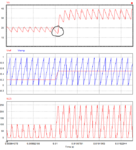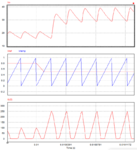asdf44
Advanced Member level 4
Ok you're right that I can see DCM modulation schemes that add or subtract to the time when the switch is turned on which have no RHPZ as you describe.
But I can see DCM modulation schemes that add or subtract to the time the switch is turned off which are discontinuous and have an RHPZ as I described.
So I see this depending on the implementation, not strictly on DCM vs CCM.
But I can see DCM modulation schemes that add or subtract to the time the switch is turned off which are discontinuous and have an RHPZ as I described.
So I see this depending on the implementation, not strictly on DCM vs CCM.


